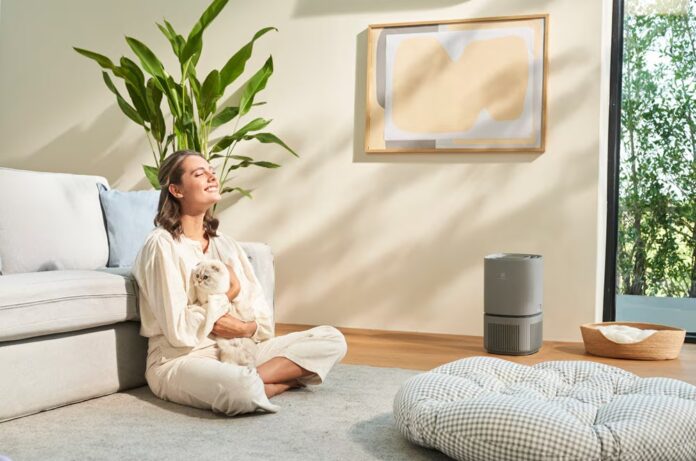Reducing indoor air pollution is essential for maintaining good health, improving air quality, and preventing respiratory issues. Here’s a comprehensive guide covering the causes, effects, and ways to minimize indoor air pollution:
1. Sources of Indoor Air Pollution
- Household Products: Cleaning agents, air fresheners, and pesticides emit volatile organic compounds (VOCs).
- Cooking and Heating Appliances: Gas stoves, fireplaces, and kerosene heaters produce carbon monoxide (CO) and nitrogen dioxide (NO2).
- Building Materials: Paints, adhesives, furniture, and carpets can release formaldehyde and other harmful gases.
- Mold and Mildew: Moist areas like bathrooms and basements are prone to mold growth.
- Pets and Dust Mites: Dander, fur, and dust mites are common allergens.
- Tobacco Smoke: Cigarette smoke releases hundreds of toxic chemicals.
- Outdoor Pollution Entering Indoors: Pollen, smog, and dust can enter through open doors and windows.
2. Health Effects of Indoor Air Pollution
- Short-Term Symptoms:
- Irritation of eyes, nose, and throat
- Headaches, dizziness, and fatigue
- Respiratory discomfort like coughing and sneezing
- Long-Term Health Issues:
- Chronic respiratory conditions (asthma, bronchitis)
- Cardiovascular diseases
- Lung cancer (from long-term exposure to radon, tobacco smoke)
- Cognitive issues (especially in children) and developmental problems
3. Strategies to Reduce Indoor Air Pollution
3.1 Ventilation Improvement
- Open Windows: Ensure good airflow by opening windows regularly.
- Use Exhaust Fans: Install fans in kitchens and bathrooms to expel moisture and cooking fumes.
- Air Purifiers: Use HEPA-filtered air purifiers to capture airborne pollutants.
3.2 Control Humidity Levels
- Dehumidifiers: Maintain humidity between 30-50% to prevent mold and mildew growth.
- Fix Leaks: Repair any plumbing or roof leaks promptly to avoid water damage and mold.
3.3 Use Non-Toxic Cleaning Products
- Switch to eco-friendly, natural cleaners that don’t emit harmful chemicals.
- Avoid aerosol sprays and opt for solid or liquid cleaning solutions.
3.4 Reduce VOC Emissions
- Choose Low-VOC Paints and Furnishings: Look for eco-labels when purchasing.
- Allow New Items to Off-Gas: Let new furniture or carpets air out before bringing them inside.
3.5 Minimize Indoor Smoking
- Enforce a no-smoking policy indoors to avoid toxic secondhand smoke exposure.
- Use designated smoking areas outside the home if needed.
3.6 Control Dust and Allergens
- Regular Cleaning: Vacuum carpets and rugs using HEPA-filtered vacuums.
- Wash Linens Frequently: Prevent dust mites by washing bedding in hot water.
- Air Conditioning Filters: Clean or replace HVAC filters regularly.
3.7 Handle Cooking Emissions Properly
- Use chimneys or range hoods when cooking with gas.
- Avoid using open-flame appliances in poorly ventilated areas.
3.8 Prevent Radon Exposure
- Test your home for radon using radon detection kits.
- If detected, hire professionals to seal cracks and improve ventilation.
4. Natural Ways to Improve Indoor Air Quality
- Houseplants: Plants like spider plants, peace lilies, and snake plants absorb some toxins (though their effectiveness is limited compared to ventilation).
- Essential Oils: Certain essential oils, such as tea tree and eucalyptus, have antimicrobial properties.
- Activated Charcoal: Charcoal bags can absorb odors and moisture.
5. Monitoring Indoor Air Quality (IAQ)
- Use IAQ Monitors: These devices measure pollutants like carbon dioxide (CO₂), humidity, and PM2.5.
- Regular Inspections: Periodically check for mold, leaks, and HVAC maintenance.
6. Conclusion
By improving ventilation, choosing non-toxic materials, maintaining good hygiene, and monitoring air quality, you can significantly reduce indoor air pollution. These small changes create a safer and healthier living space for you and your family, minimizing the risk of respiratory and other health issues.



